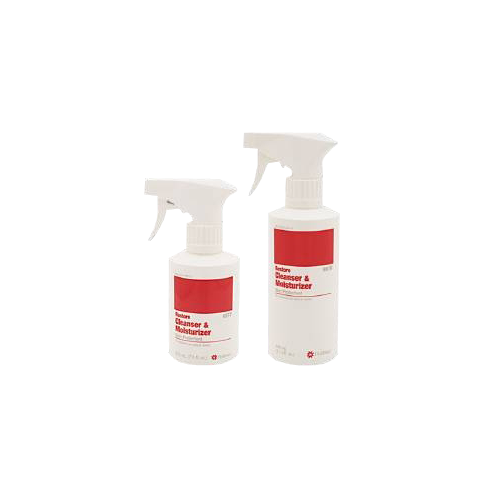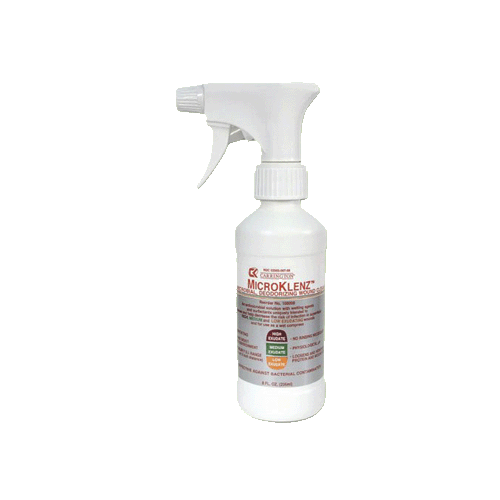
Introduction | Importance of Irrigation | Wound Cleansing | Wound Irrigation
In order to recover properly from any wound, we need to keep it clean so that we expedite healing and ward off infection. Whether it’s after surgery, a wound that requires just a few stitches, or just a skinned knee, the need to keep these areas clean and contaminant free should not be underestimated. Since there are many different types of wounds, there are many different techniques for cleaning and irrigating wounds, either open or closed. Wound preparation can be important, if not critical to the healing process. Finding products for wound preparation need not be a worry. The consequences of not keeping our wounds clean can lead to infection, pain, or even death in extreme cases.
The number one thing wound cleansing techniques are in place for is to avoid infection. In an article written for firstaid.about.com by Rob Brouhard (EMT), some signs of complications from open wounds include tenderness/inflammation around the wound, fever, swelling, numbness, and red streaks around the wound. Anyone experiencing these symptoms should seek medical help. Infections of a wound can result in tetanus, which is a serious infection that can lead to spasms in the jaw (sometimes called lockjaw) and if untreated possible death. Tetanus is controlled through vaccinations with your latest being within the last 10 years. The first step after any bleeding is controlled is to clean out any contaminants in the wound. If the contaminants cannot be cleaned from the wound it should not be dressed until clean. Wound cleaners come in a wide variety and checking with your doctor/nurse should find one easily.

The use of irrigation solutions is an effective method for cleaning and maintaining wounds in order to avoid contamination and infection. Dr. Allen Gabriel writes in an article for the website emedicine.medscape.com, that wound irrigation is the flow of a solution on an open wound to achieve wound hydration, remove deep debris, and help with visual examination. He points out that the irrigation solution used is meant and to remove debris and pathogens contained in wound exudates or residue from other topical wound care products and that the goal of irrigation is to clean the wound, avoid trauma to the wound bed, and minimizing risk of getting further bacteria into the wound area. The article states that normal healing is characterized by three phases: inflammatory, proliferative or fibroplastic, and remodeling. This normal process can be interfered with due to weaknesses in the body’s inflammatory response and the use of irrigation solutions can help remove contaminants and help the body’s own healing process proceed normally.
There are many factors that go into choosing the proper wound cleansing product. The Ameriderm Wound Cleanser Spray features a pH balanced cleanser to remove foreign debris and dead tissue from wounds. If they cleanser with antimicrobial properties is what you’re after, the Carrington MicroKlenz Antimicrobial Deodorizing Wound Cleanser might fit the bill. It uses benzethonium chloride as its antiseptic agent and can be sprayed directly for low, medium, and high exudating wounds. A common way to keep wounds clean is through the use of ointments. Dynarex Bacitracin Ointment offers an ideal way to inhibit bacterial growth and help prevent infection. Cardinal Health No-Sting Barrier Protectant provides convenient single use packages to prevent infection and limit the spread of harmful bacteria.

Choosing the appropriate irrigation solution is a critical step in wound irrigation. A good example is the 3M Wound Cleanser. Its zinc nutrient formulation provides a moist, mildly acidic environment conducive to healing. The most commonly used irrigation solution is normal saline, due to its low toxicity, and it is isotonic. It is important to note that bacterial growth can appear in saline within 24 hours of opening the container. A great choice is the Amerigel Wound Wash Spray. It has a sterile, pH neutral solution to promote healing that is free from burning or stinging and is drug-free. Also available is the Church & Dwight Simply Saline Sterile Wound Wash Saline which delivers a sterile saline solution designed to flush and cleanse wounds of debris to help eliminate infection. Nurse Assist Saline Wound Flush offers another choice to those who choose saline solutions to irrigate their wounds. It’s an easy to use sterile way to irrigate and cleanse your wounds. An additional option for wound irrigation is sterile water. Since it is prepared by distillation, it is nonpyrogenic and contains no antimicrobial or bacteriostatic agents. Hydrogen peroxide is another widely used wound antiseptic. The American Medical Association stated that the effervescent action of hydrogen peroxide used at full strength can help debris and necrotic tissue from the surface of the wound. Safetec Hydrogen Peroxide Spray is a painless way to bubble out dirt and bacteria before bandaging. For those that don’t want to use a spray, Medline’s Hydrogen Peroxide Solution offers a 3% hydrogen peroxide as a first aid antiseptic and cleansing agent. Along those same lines is the Geiss Destin Good Sense Hydrogen Peroxide Solution to provide a 3% hydrogen peroxide antiseptic that is essential to every first aid kit and home.
Once you have determined how and what you’re going to use to clean and irrigate your wound, an application method needs to be chosen. While some wound cleansers or irrigation solutions can be sprayed on directly, some need to be applied. One option to be considered is the use of a syringe. The Bard Bardia Piston Irrigation Syringe is a single use, sterile way to irrigate or clean your wound. Another option is the Bard Bulb Irrigation Syringe. It’s also a single use, sterile method to deliver your choice of cleansing material. An additional choice is the Kendall Irrigation Trays and Syringes as an effective way for wound irrigation. Also, Medline offers the Contro-Bulb Irrigation Syringe and the Contro-Piston Irrigation Syringe. Both are simple and easy-to-use ways to deliver irrigation solutions. A good way to apply ointments is through the use of sterile gauze. By using sterile gauze it minimizes bacteria and infection. They come in a variety of sizes so you can choose the one that best fits your needs.
Disclaimer: All content found on our website, including images, videos, infographics and text were created solely for informational purposes. Our content should never be used for the purpose of diagnosis or treatment of any medical conditions. Content shared on our websites is not meant to be used as a substitute for advice from a certified medical professional. Reliance on the information provided on our website as a basis for patient treatment is solely at your own risk. We urge all our customers to always consult a physician or a certified medical professional before trying or using a new medical product.